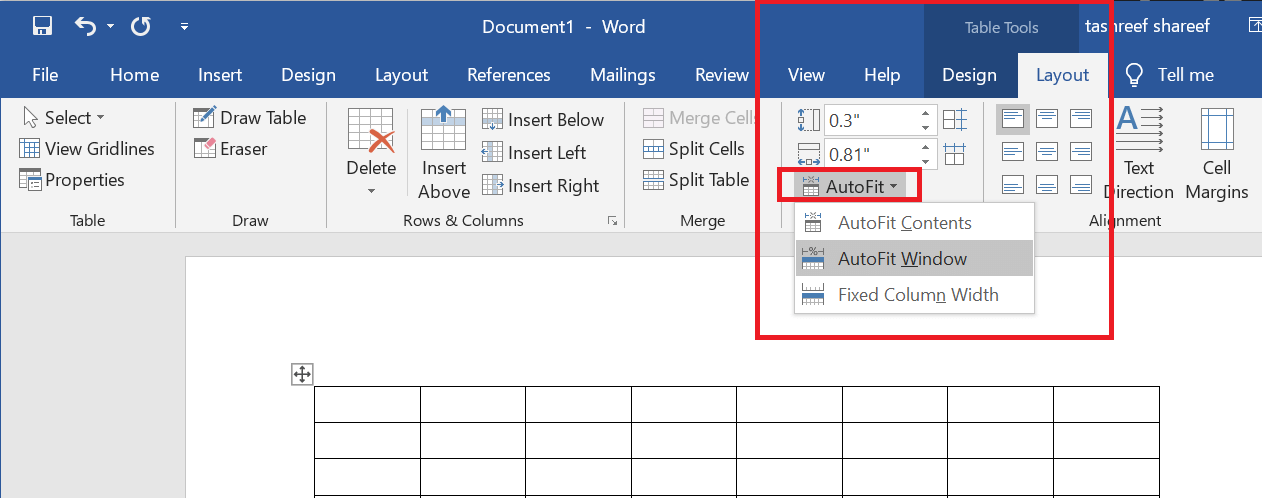


Adjust table columns to fit text word how to#
In this tutorial, I covered google sheets and how to make text fit in cell. Note that this method can be combined with the text wrapping method, as in the screenshot belowĮxample Spreadsheet: Make a copy of the example spreadsheet The cells will be merged and if enough cells were selected, the text will fit nicely in the new merged cell. Step 2Ĭlick on the Merge Cells button in the toolbar Note that only the data in the top-left cell will be preserved after merging. You can select cells to the right of the cell, underneath it, or both. Select the cell in question and a range of cells after it. Here’s now to merge cells to make text fit: Step 1 The last method should be used when text wrapping doesn’t give the desired effect on its own and resizing the cell messes up other portions of the spreadsheet.

Simply click on the bottom boundary of the row number and drag and drop to resize If the cell is too short, the row height can be set in much the same way as the column width. Your cursor will change to a two-ended resize arrow, and a vertical blue line will appear To adjust column width, click on the left-hand boundary between that column and the next.
Adjust table columns to fit text word update#
This can happen if the column width is too narrow, or if the row height has been manually set so it doesn’t update automatically to fit its contents. Sometimes the cell size itself is the reason text doesn’t fit. Unless you have manually set the row height, it will adjust as needed so all the text displays in the cell Note: The data in the cell wraps to fit the column width, thus if the column width changes, the data wrapping changes as well. Step 3: Double-click the wrap text symbol. Step 2: Check Wrap Text under the Alignment option. The text will wrap onto as many lines as needed for it to fit in the current column width. So to do this follow the given steps: Step 1: Choose the cells where you want to wrap text. Select the cell you want to change the text wrap for and click on the Text Wrapping toolbar icon, then select the Wrap option Once your column widths are set in this way, you can do any final column adjustment, as necessary.If the text doesn’t fit in the cell because it spills over the edge like in the screenshot below, often the best solution is to make the text wrap. If there is information in any of the columns, the column width is set so that information fits on a line (if possible). If the table is empty, the columns are evenly resized so they fit within the page margins. The effect on your table depends on whether your table contains information, or not. Word displays the Cell Height and Width dialog box. Choose Cell Height and Width from the Table menu.

If you are using Word 97, a totally different method of fitting your columns has to be used. If the table is still too wide, Word narrows the widest columns, thereby wrapping the contents of those columns, until it can fit everything. If there is information in the table, then each column is made as wide as possible to display all the information in that column. If the table is empty, each column is made as narrow as possible, and you end up with a "scrunched" table. This can sound confusing, and the effects are best understood by trying out the feature with different types of information in your table. The result is that Word adjusts your table so as much of each column is as visible as possible, within the limits of the page margins and according to how much information is in each column. Within the submenu, choose AutoFit to Contents.Right-click anywhere within the table.If you want to adjust all the columns so everything fits as well as possible, follow these steps if you are using Word 2000 through Word 2003: This allows you to see the columns that extend past the right margin and make any adjustments. Another thing to try is to switch to Normal (or Draft) view, as opposed to Page Layout (or Print Layout) view. For instance, you could change to landscape orientation, adjust the column widths, and then switch back to portrait orientation. There are several ways to deal with this type of situation. This may make it difficult to "grab" and resize the right-most column. If you later add a column to the table, the inserted column will push the right edge of the table past the right margin. When you first add a table to your document, Word determines column width by dividing the space available between margins by the number of columns in the table.


 0 kommentar(er)
0 kommentar(er)
